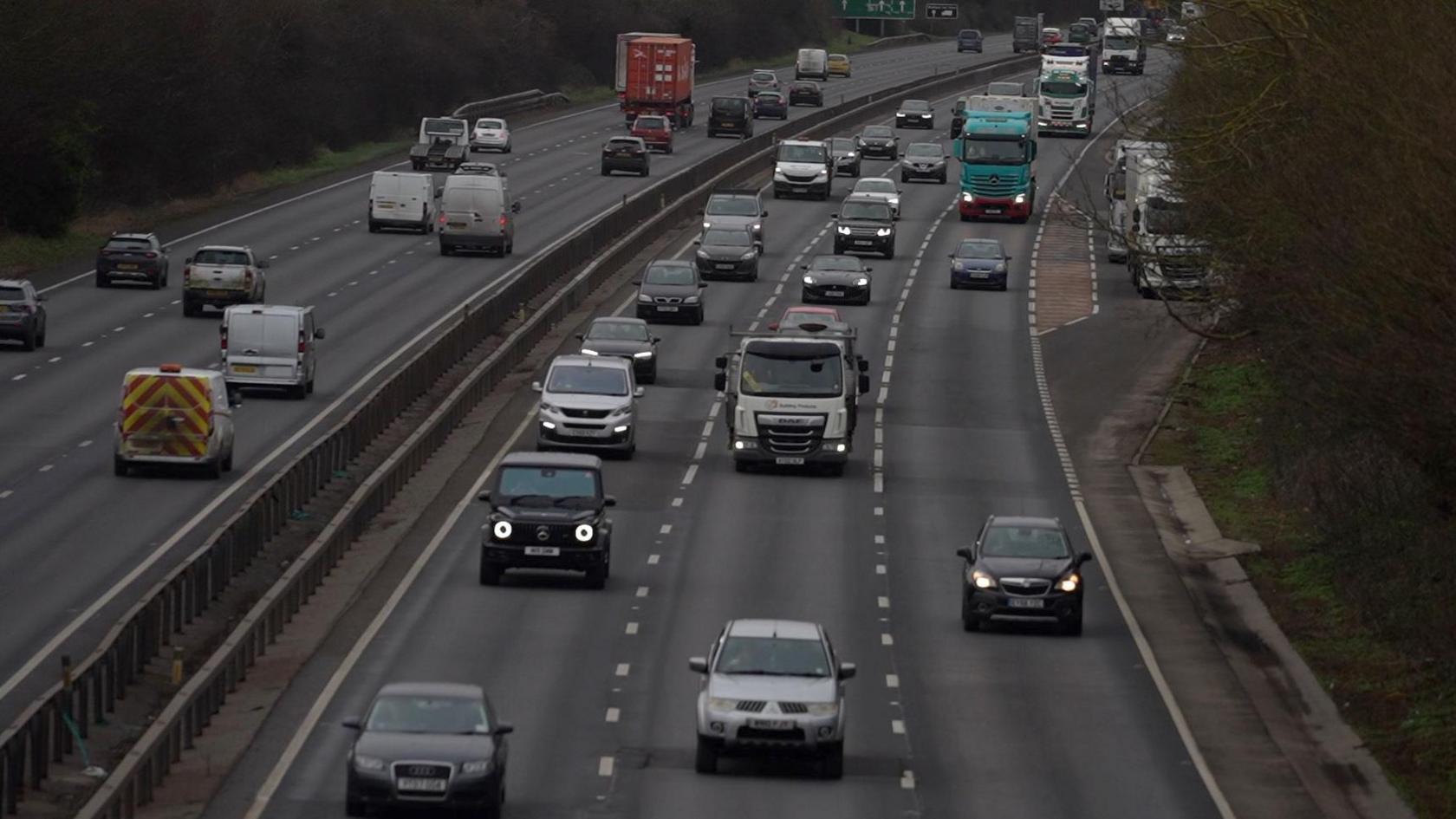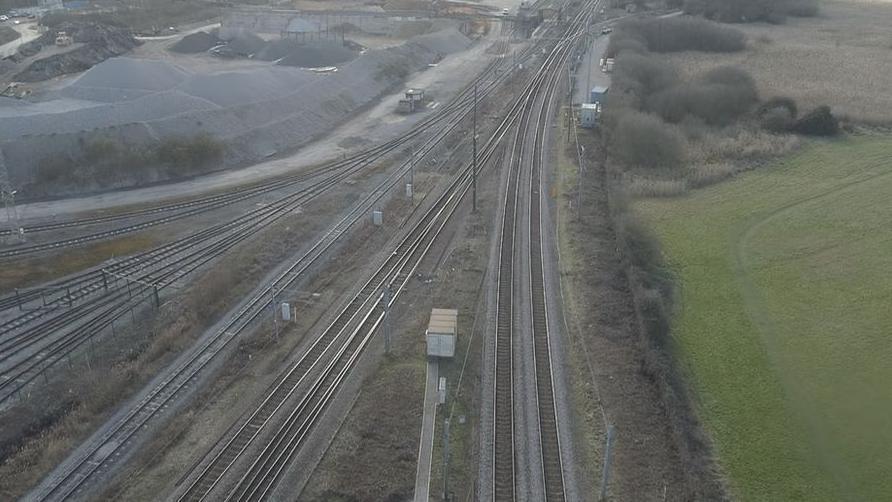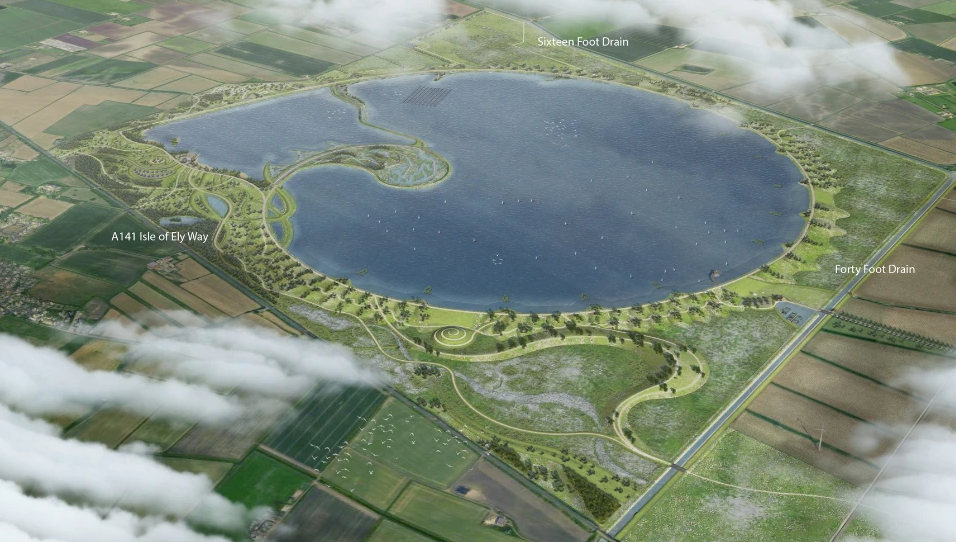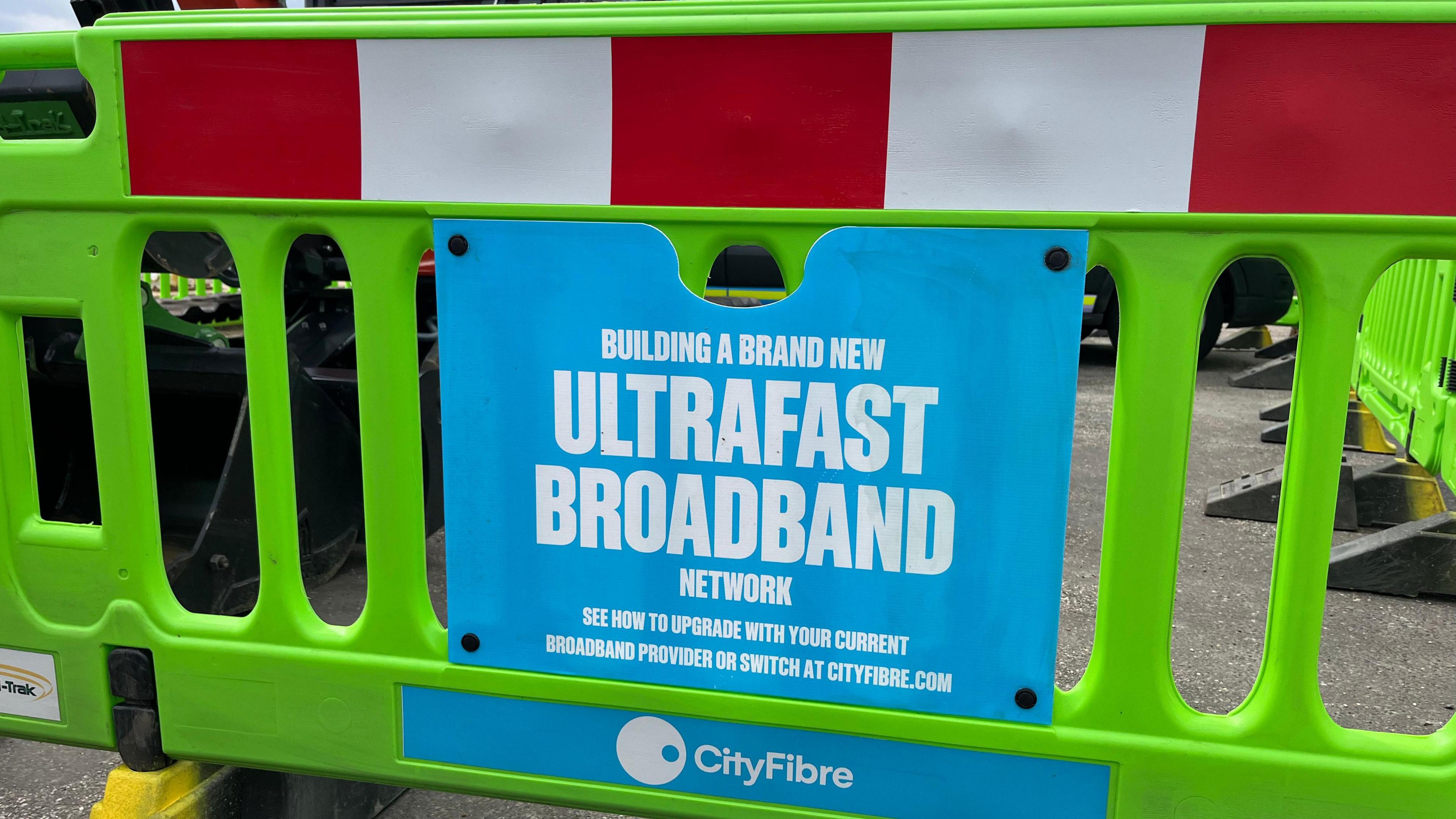The funding top five: Roads, railways and reservoirs

Many businesses, MPs and local authorities believe that much more needs to be spent on improving infrastructure, particularly transport, in the East
- Published
The government delay in deciding whether or not to go ahead with the Lower Thames Crossing has drawn attention to the need for infrastructure investment across the East of England.
The region has the fastest growing population, is most affected by climate change and has the worst road congestion in the country.
But local MPs and business organisations say it receives well below the national average when it comes to government investment.
With an international investment conference due to take place next week and the budget at the end of the month, ministers are being lobbied heavily to support a variety of infrastructure schemes.
So what are the main ones on the region's wish list ?
Ely and Haughley rail junctions

Ely North junction is where routes from Norwich, Kings Lynn, Peterborough, Cambridge and Felixstowe all converge
It would cost more than half a billion pounds to upgrade Ely North in Cambridgeshire and the Haughley junction near Stowmarket.
But campaigners say doing so would allow 2,900 extra freight services to operate to and from Felixstowe Port every year and make space for an extra 277,000 passenger journeys from Norfolk, Suffolk and Cambridgeshire.
The Lower Thames Crossing

The Lower Thames Crossing has been planned for the last 15 years. The Transport Secretary will decide shortly whether to give it her backing
Of all the many road schemes waiting for funding this is probably top of the list.
Costing around £9bn, external, the 14-mile (22.5km) road would run under the Thames from Tilbury to Gravesend and join up with the M25.
National Highways says the scheme would reduce congestion at Dartford by 20% - an it has the support of many businesses in the area.
But environmental groups worry about the damage to green belt land and fear the crossing would drive up car use.
Sizewell C

Work has already started on Sizewell C but there are still doubts about whether it can be fully funded
Preliminary work is already under way on the new nuclear power station on the Suffolk coast.
The new government has said it is committed to the project. But there are still questions about who will fund it.
The Conservatives had committed more than £1bn to start things off, but it also needed to find private investors to fund the majority of the project.
Both Sir Keir Starmer and the former Prime Minister Rishi Sunak told me that they believed there were firms willing to put the money in.
But those opposed to the project question who would want to invest in such a long term scheme which could overrun - and come in over budget.
Reservoirs

Anglian Water and Cambridge Water want to build a new reservoir close to Chatteris, Doddington and March in Cambridgeshire
Water supply is becoming a growing issue particularly in Cambridgeshire, where the Environment Agency has started objecting to plans for new housing - worried that there won't be enough water to go round.
With plans for thousands of new homes and 470,000 new residents by 2040, there is a need for a new reservoir in Fenland and a smaller winter storage reservoir in North Suffolk.
Both will need to be funded.
Broadband

Broadband coverage in parts of the East is among the worst in the country
About 74% of premises in the East of England have access to gigabit-capable connections, which is a big increase on the year before where coverage was just 65%.
But the region still has the second lowest gigabit coverage of any region, something it fears will discourage companies from locating to the East.
And outside the top five..
.. there are dozens of other road schemes and railway improvement projects.
There are calls for better flood defences, improved electrical infrastructure and more investment in bus services.
A recent report from the Local Government Association, external (LGA) estimates that the East of England contributes £163bn a year, representing 11% of the UK economy outside London.
In 10 years' time that could be £220bn but the region needs to be better connected to achieve that.
Naomi Green, from England's Economic Heartland, which campaigns on behalf of local businesses and councils, says: "Good infrastructure brings prosperity to the UK economy and many of these schemes will have a return that's worth more than the cost of actually building them."
But she warns that with rising construction costs, all these projects will become a lot more expensive in the years to come, a good reason for the investment, either private or public, to be found sooner rather than later.
More stories
Decision on new £8.3bn Thames Crossing delayed
- Published4 October 2024
Rachel Reeves signals plan to spend more on big projects
- Published4 October 2024
Anglian Water pledges £1.5bn in resilience plans
- Published3 August 2024
Get in touch
Do you have a story suggestion for the East of England?
Follow East of England news on X, external, Instagram, external and Facebook: BBC Beds, Herts & Bucks, external, BBC Cambridgeshire, external, BBC Essex, external, BBC Norfolk, external, BBC Northamptonshire, external or BBC Suffolk, external.